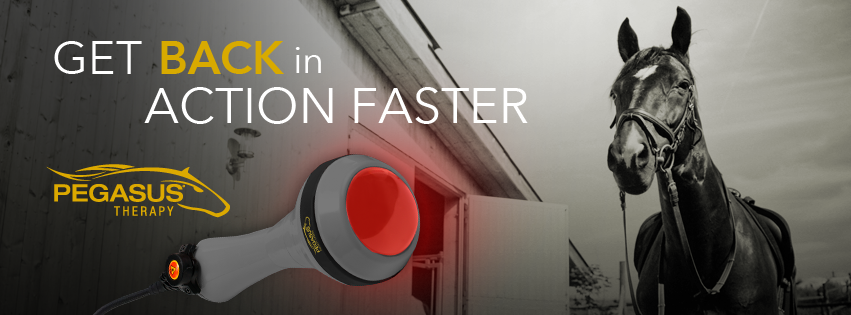Just How Laser Therapy in Horse Therapy Is Changing Vet Treatment for Equines
Laser therapy has emerged as a transformative technique in equine vet care, supplying a non-invasive option that speeds up healing and improves general wellness. The portability and versatility of laser treatment tools further highlight their growing necessity among veterinarians.
Comprehending Laser Treatment

The modern technology behind laser treatment is based in the principle of photochemistry, where photons are taken in by chromophores within cells, causing increased ATP production and inflection of reactive oxygen varieties (Equine Therapy). This, in turn, promotes cellular spreading, reduces inflammation, and increases healing. Vet specialists use different types of lasers, including low-level lasers (LLLT) and high-power Course IV lasers, depending upon the specific therapeutic purposes and the nature of the equine problem being dealt with
Various laser wavelengths and power setups are carefully picked to target various cells midsts and achieve desired clinical results. Security protocols are extremely important, as improper usage can bring about thermal damage or suboptimal healing impacts. Thus, a comprehensive understanding of laser therapy's devices and applications is important for its reliable execution in equine vet technique.
Advantages for Horse Health
The myriad advantages of laser treatment for equine wellness include improved recovery, discomfort reduction, and boosted movement. This sophisticated treatment method leverages details wavelengths of light to permeate cells, promoting cellular feature and promoting rapid cells fixing. The non-invasive nature of laser therapy guarantees marginal tension and pain for the horse, assisting in a smoother recovery process.
Boosted healing is one of the leading advantages, as laser treatment speeds up cellular regrowth and collagen synthesis. This causes much faster healing times from injuries and procedures. Pain reduction is achieved with the anti-inflammatory results of laser treatment, which reduces swelling and reduces the manufacturing of pain-inducing chemicals. As a result, equines experience considerable remedy for chronic and sharp pain problems.
Enhanced movement is another crucial benefit, especially for efficiency and functioning horses. By reducing swelling and discomfort, and enhancing tissue fixing, laser treatment helps in bring back joint feature and muscle mass adaptability. The cumulative impact of these advantages is not just a quicker return to regular activity however also a general improvement in the horse's top quality of life. Hence, laser therapy stands as a transformative device in modern horse veterinary treatment.
Common Problems Dealt With
Laser treatment has actually emerged as a versatile therapy choice for a variety of common equine conditions. In addition, laser treatment is reliable for conditions like osteoarthritis, where it helps alleviate joint swelling and advertise tissue fixing.
Wound management is one more area where laser Visit This Link treatment has actually shown considerable assurance. Chronic injuries or slow-healing ulcers can be especially challenging in horses, however laser treatment enhances mobile regeneration and boosts blood flow, hence speeding up the recovery procedure. Laser therapies have actually been effectively used in handling hoof problems such as laminitis and abscesses, relieving discomfort and advertising quicker recovery.

Technology Behind Laser Therapy
Beyond the myriad conditions treatable with laser therapy, the modern technology itself qualities more detailed examination. At the heart of laser treatment is making use of specific wavelengths of light to permeate cells and generate biological responses. These wavelengths, typically varying from 600 to 1000 nanometers, are selectively taken in by chromophores in the skin, muscle mass, and various other cells, initiating a waterfall of cellular events.
Laser tools used in veterinary medicine frequently make use of low-level laser therapy (LLLT) or chilly laser therapy. Unlike high-powered medical lasers, these tools run at reduced energy degrees, enhancing restorative advantages while minimizing thermal damages. The power from the laser light promotes adenosine triphosphate (ATP) production, enhances mobile metabolic process, and increases cells repair service procedures.

Success Stories and Instance Studies

Showcasing the substantial benefits of laser treatment, countless you could check here success tales and situation studies brighten its transformative influence on equine wellness. One such case includes a purebred racehorse struggling with persistent tendonitis. Standard therapies yielded marginal improvement, but after integrating laser treatment right into the regimen, the steed exhibited significant reductions in swelling and discomfort within weeks, eventually going back to affordable racing.
One more compelling instance includes a dressage horse identified with serious back pain, limiting its efficiency. A veterinary team employed low-level laser therapy (LLLT) to target the irritated locations, resulting in marked enhancement in flexibility and a notable decline in discomfort. Over numerous sessions, the horse regained its peak type, showcasing the efficiency of laser therapy in attending to bone and joint issues.
Additionally, a study performed at a leading equine center analyzed 50 horses with various soft tissue injuries treated with laser therapy. The outcomes stood out: 85% of the steeds demonstrated sped up recovery times and enhanced mobility. These situations emphasize the adaptability and performance of laser treatment in equine medication, using a non-invasive, address scientifically-backed method to boosting recuperation and performance in equines.
Verdict
Laser therapy is changing equine vet treatment by providing a non-invasive therapy that speeds up healing, minimizes swelling, and reduces pain. With its effectiveness in dealing with a variety of problems, from bone and joint injuries to chronic conditions like osteoarthritis, this technology dramatically enhances equine health and wheelchair. The transportability and flexibility of laser treatment additionally emphasize its transformative influence on vet techniques, strengthening its duty as a crucial tool in modern equine health care.